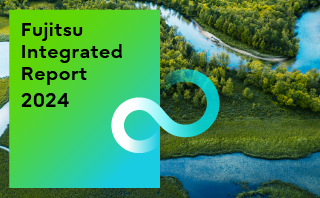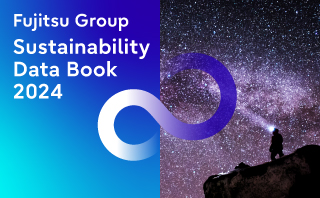-
Sustainability at Fujitsu Group
- Sustainability Management in the Fujitsu Group
- GRB(Global Responsible Business)Goals and Achievments for FY2022
- GRB(Global Responsible Business)Goals for FY2025
- Fujitsu's accessibility
- Stakeholder Engagement
- United Nations Global Compact
- SDG-related Activities in Fujitsu
- External Recognition and Awards
-
Global Responsible Business
- Environment
-
- Environmental Management
- The Fujitsu Group Environmental Vision on Climate Change
- Living in Harmony with Nature (Conservation of Biodiversity)
- Environmental Action Plan
- Environmental Data
- Environmental Communication
- Environmental Social Activities
- Disposal and Recycling of ICT products
- Environmental Considerations in ICT Products
- Governance
-
Data and Documents
- Fujitsu Group Sustainability Data Book 2024
- Social, Governance and Environmental data
- Independent Assurance Report

- GRI Standards / United Nations Global Compact (UNGC) principles Comparison Table
- SASB Standards Comparison Table
- Sustainability Information Disclosure Framework
- Link to regions responsible business reports
- Contact
- Sitemap
Fujitsu Group Environmental Action Plan
Operating Environment and Growth Strategy
Changing Environmental Activities in Line with Our Business Model Transformation
Originally a manufacturer of telecommunications equipment, Fujitsu developed into a global ICT enterprise with vertically integrated operations in three sectors: Technology Solutions offers a range of ICT-based services and solutions, Ubiquitous Solutions designs and manufactures products such as PCs and mobile phones, and Device Solutions is responsible for developing the semiconductor business. Structural reforms undertaken since FY 2015 have channeled most management resources into the core sector of Technology Solutions. In FY 2019, Fujitsu repositioned itself as a Digital Transformation (DX) enterprise that aims to make full use of digital technologies in the creation of innovative services and business processes. Then in 2021, the company launched Fujitsu Uvance. The objective going forward is to make the world more sustainable by developing businesses with integrated cutting-edge AI technologies that will help customers achieve Sustainability Transformation (SX) and solve societal problems.
The nature of the Fujitsu Group’s environmental impact has changed as a result of this modified business model. For example, manufacturing semiconductors, electronic components and PCs accounted for the majority of energy consumption in the past, but business restructuring has greatly reduced the amount of energy these industries consume. Conversely, with the expansion in cloud computing and IoT, electricity consumption in Fujitsu data centers now accounts for a large portion of total power use. The Fujitsu Group is therefore promoting environmental activities linked to its growth strategy, responding to the demands of society by using renewable energy, reducing the power data centers consume, and improving their efficiency.
Operating as a Responsible Global Corporate Citizen
The adoption of the Sustainable Development Goals (SDGs) by the United Nations and the commencement of the COP 21 Paris Agreement increased the need for initiatives aimed at building globally sustainable societies. The Fujitsu Group employed a materiality analysis in a Groupwide review designed to enhance the effectiveness of activities that aim to contribute to sustainable development. This analysis identified six priority issues including the environment; human rights, diversity and inclusion; wellbeing; and supply chain. The result is a unified framework under the banner of Global Responsible Business (GRB), which will oversee activities that strengthen initiatives in non-financial areas while striving for ‘sustainability management’ worthy of a responsible global corporate citizen.
History of the Environmental Action Plan
Environmental Awareness Contributes to Sustainability for Our Customers and Society
The Fujitsu Group has formulated an Environmental Action Plan since 1993 and continues to broaden the scope of its environmental activities. Between stages I and V (FY 1993-2009) the objective was to significantly reduce the environmental impact of the Fujitsu Group itself. Far-reaching measures were implemented throughout our factories and offices to cut CO2 emissions and chemical pollutants, to reduce waste, and so on. In stage VI (FY 2010-2012), we expanded the focus of our activities to three important initiatives. In addition to strengthening measures to lessen our own impact on the environment, we supported similar efforts by customers and society as a whole and also took on the challenge of conserving biodiversity. Between stages VII and IX (FY 2013-2020), we clearly demonstrated our commitment to contributing to the resolution of environmental issues faced by customers and society through the use of ICT. In order to reduce our own environmental impact, we expanded the scope of our activities to cover the entire supply chain, including suppliers. In stage X (FY 2021-2022), we worked to promote and expand the use of renewable energy for our customers and society by utilizing leading-edge ICT technologies unique to the Fujitsu Group, such as the introduction of renewable energy at our business sites through CPPA and other means, and blockchain technology.
The Fujitsu Group will continue responding to the demands of changing times and will deepen and further develop its environmental activities with the goal of helping to create a sustainable and rewarding society.
Fujitsu Group Environmental Action Plan (Stage XI)
Social responsibility as a leading company in Sustainability Transformation (SX)
As a leading company in SX, the Fujitsu Group is committed to reducing the environmental impact of its group companies, including those in the supply chain, and to expanding and enhancing the value it provides to customers and society through technology. We will work with our customers and partners to realize a sustainable future.
Outline of the Fujitsu Group Environmental Action Plan (Stage XI)
In order to resolve environmental and social issues, we have set eight targets in three global risks areas highlighted by the World Economic Forum: " Climate Change," " Resource Circulation," and " Living in Harmony with Nature ". These are mapped against the two values of " Customers and Society " and " Fujitsu and Supply Chain".
Fujitsu group is taking firm steps to realize its environmental vision, such as contributing to digital technology for customers and society and increasing the ratio of its own use of renewable energy.
- Target period:3 years from Fiscal year 2023 to Fiscal year 2025
Customers and Society
Fujitsu aims to transform its core business with a portfolio of offerings focused on ESG Contribution and SX by 2030. In particular, to solve environmental issues in the areas of climate change and carbon neutrality, resource recycling through circular economies, and biodiversity, we will connect stakeholders from across society and industries and contribute to the SX of customers and people around the world. In FY 2023, we developed environmental contribution metrics to measure our impact on the environment, allowing us to provide services with clear contributions and value. From FY 2024, we will measure and disclose the quantitative amount of our contribution. Furthermore, to realize a sustainable society in which no one is left behind, we will develop solutions, services and initiatives that contribute to SX, so that customers and societies alike will trust and objectively rate us on a worldwide scale as a leader in SX.
Fujitsu and Supply Chain
Climate Change
In order to achieve Net Zero (*1) emissions of greenhouse gases from our business activities and from the entire value chain, we set reduction targets for FY2025. We will achieve these through the strategic deployment of renewable energy and the use of advanced ICT to drive energy conservation, while at the same time encouraging our suppliers to monitor and reduce their environmental impact, make their own products more energy-efficient, and so on.
- *1Net Zero Greenhouse Gas Emissions
Reduce greenhouse gas emissions by 90% or more from the base year in the target year and remove residual emissions of 10% or less by directly recovering CO2 from the atmosphere (DAC) or by absorbing CO2 through planting trees.
Resource Circulation
We aim to develop these products and services in FY 2025 in order to design products that conserve resources and improve the resource recycling rate, and to build a circular economy business model that can overcome resource constraints. We will also continue to reduce water use and raise awareness of water resource conservation throughout the supply chain.
Living in Harmony with Nature
In response to Target 15 of the Global Targets for 2030 set out by the Kunming-Montreal Global Biodiversity Framework, we will achieve nature-positive outcomes by reducing negative impacts on biodiversity and increasing positive impacts in the areas of our corporate operations, including supply chains.
Environmental Action Plan
| Customers and Society | Fujitsu and Supply Chain | |||
|---|---|---|---|---|
| Business Field | Upstream Business | Fujitsu's Business Areas | Downstream Business | |
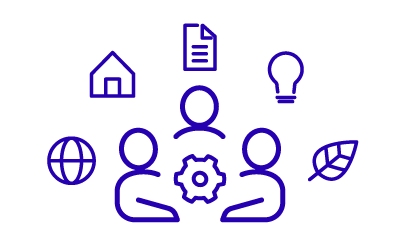 | 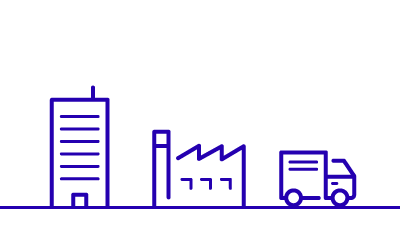 | 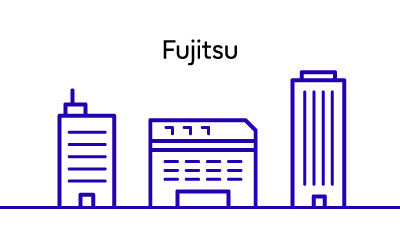 |  | |
| Climate Change |
|
|
|
|
| Resource Circulation |
|
|
| |
| Living in Harmony with Nature |
| |||
Environmental Action Plan Targets
| Goal | Base Line | Targets for FY 2025 | |||
|---|---|---|---|---|---|
| Customers and Society |
| - | Deliver SX offerings to customers | ||
| Fujitsu and Supply Chain | Climate Change
(*2) | Scope 1,2 |
| FY 2020 | Reduction of at least 50% |
| Scope 3
(Category 11) |
| FY 2020 | Reduction of at least 12.5% | ||
| Scope 3
(Category 1) |
| - | Goal setting completed | ||
| Resource Circulation |
| - | CE Business Products
Service Development | ||
| - | 57,000 m3 or more | |||
| - | Request Completed | |||
| Living in Harmony with Nature |
| FY 2020 | Reduction of 12.5% or more | ||
- *2 Climate Change:Scope 1, 2 and 3. adjusted for acquisitions and divestitures
RELATED LINKS
- Fujitsu Group Environmental Action Plan (Stage X)
- Fujitsu Group Environmental Action Plan (Stage IX)
- Fujitsu Group Environmental Action Plan (Stage VIII)
- Fujitsu Group Environmental Action Plan (Stage VII)
- Fujitsu Group Environmental Protection Program (Stage VI)
- Fujitsu Group Environmental Protection Program (Stage V)
- Fujitsu Group Environmental Protection Program (Stage IV)
- Fujitsu Group Environmental Protection Program (Stage III)

